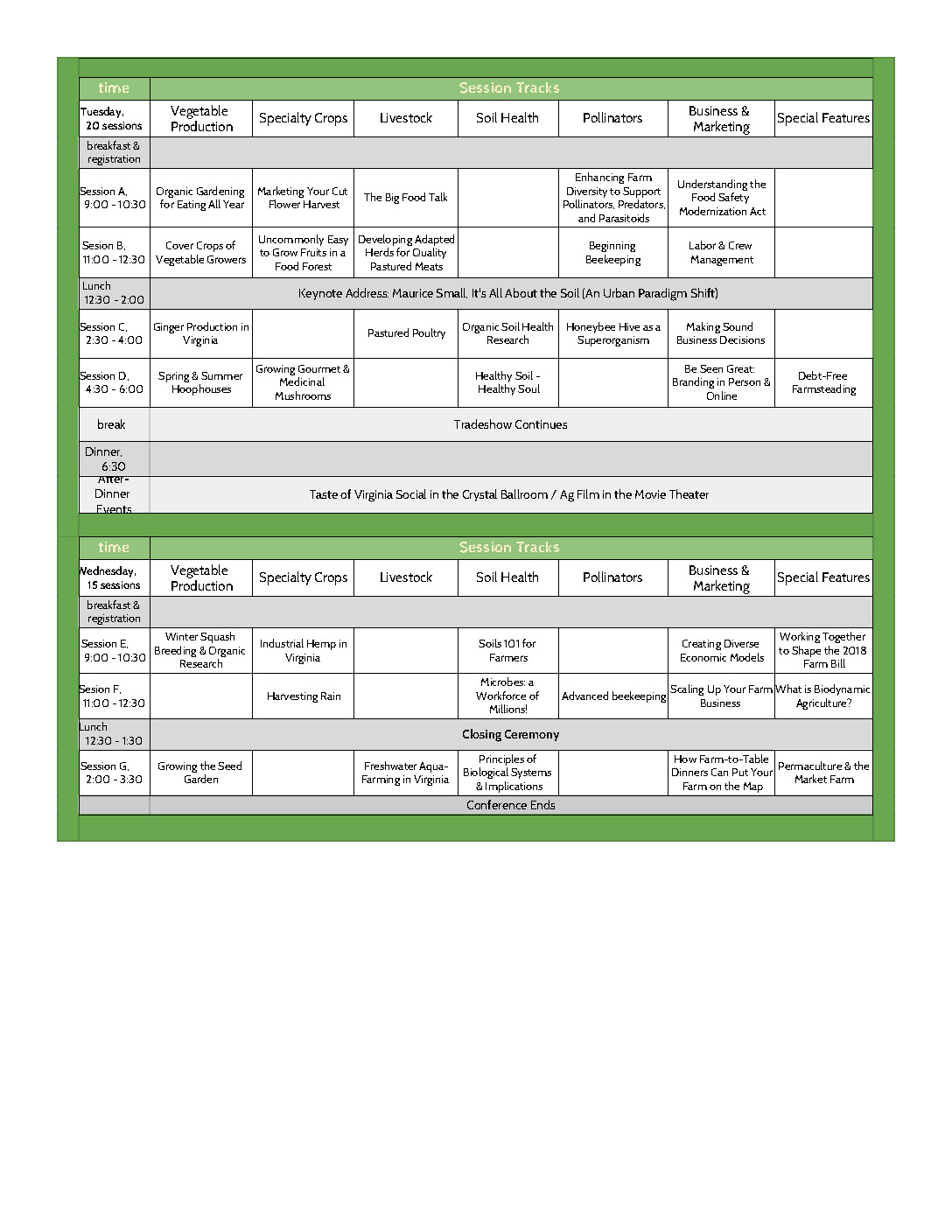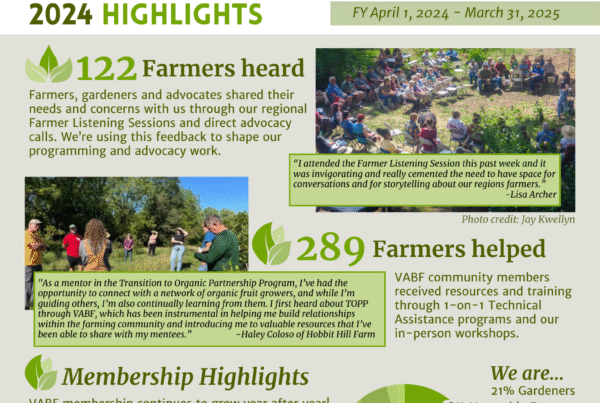2019 Conservation Stewardship Program Open for Signup
Deadline for Initial Application is May 10
We saved it, now let’s use it! Thanks to all of our collective hard work including your calls to Members of Congress last year, the 2018 Farm Bill protected and improved the Conservation Stewardship Program (CSP).
Now the program is open for sign-up. The deadline is only a few weeks away, but the initial signup process is simple: a three-page application form, and ensuring that you have a Farm Record Number through the USDA Farm Services Agency (FSA)
The CSP helps farmers implement comprehensive, whole-farm resource stewardship, with a strong emphasis on soil health practices that improve long term productivity, profitability, and resilience as well as protecting soil, water, and other resources. The program pays eligible farmers to continue and manage existing on-farm conservation, and add new conservation activities like cover crops, resource-conserving crop rotations (which add a grass-legume sod or other soil-building crop to the rotation), buffer strips, rotational grazing, and more.
Ask your NRCS Agent today about the Conservation Stewardship Program!
This year’s offerings include:
- A $1500 per year minimum contract payment.
- A 50% increase in payments for Resource Conserving Crop Rotations.
- A 25% increase in payments for Cover Cropping.
- Other Conservation Enhancements include rotational grazing, silvopasture, pollinator habitat, filter and buffer strips, biochar production, and more.
For more information on this year’s CSP and the application process, see the following resources from National Sustainable Agriculture Coalition:
- Press release April 5 http://sustainableagriculture.net/blog/release-conservation-stewardship-program-enrollment-opens/.
- Blog post April 12 http://sustainableagriculture.net/blog/csp-2019/.
- 2019 CSP Information Alert (more details on the program): http://sustainableagriculture.net/wp-content/uploads/2019/04/FY19-CSP-information-alert-040519-FINAL.pdf.
On April 11, the The Shore Daily News, an Eastern Shore, VA farmer newspaper published an article, Farmers and landowners can apply for Conservation Stewardship Program
FDA’s Draft Guidance: How to Comply with the FSMA Produce Safety Rule
The US Food and Drug Administration has issued “draft guidance” for farmers regarding the Food Safety Modernization Act’s Produce Safety Rule, now going into effect. The document is intended to help individual producers determine whether and in what ways the new Rule will affect their operation and what actions they are expected to take in order to comply.
Note that this is Draft Guidance meaning that FDA has opened the document for public comment. The deadline is really tight – April 22 – so you may want to look at this one ASAP! For more information, and link to the Draft Guidance itself, visit http://sustainableagriculture.net/blog/fsma-guidance/.
2017 Agricultural Consensus: More Consolidation, More Aging – but also More Beginning, Women, and Organic Farmers
The USDA recently published the results of the 2017 US Agriculture Census, and found that “agriculture of the middle” – midsize family farms – has declined significantly since the last consensus in 2012, while corporate consolidation of the farming sector continues. Total number of farms in the US decreased about 3% during that time, while total acreage farmed decreased 1.6% and average farm size increased by the same percentage. In 2017, about 105,000 farms accounted for 75% of total agricultural sales, down from nearly 120,000 farms in 2012. Meanwhile, the average age of farmers is now 57.5 years, up from 56.3 years in 2012, and farmers of color still make up only 5% of the farming population.
In short, we still have our work cut out for us in trying to restore America’s family farms and rural communities. Yet, the 2017 Census also had some distinctly bright spots:
- Organic product sales, numbers of organic farms, and acreages in transition to organic have increased 27%, 39%, and 15% (respectively) over the past five years.
- Beginning farmers (<10 years in farming) comprised 27% of the farming population, up by 5% since the 2012 survey.
- The number of farmers under 35 years of age increased 11%.
- Local food sales also increased significantly.
- The number of very small (<10 acre) farms increased 22%.
These figures point out the importance of our efforts for beginning, socially disadvantaged, and veteran farmers, local and regional food systems, and organic agriculture, all of which received significant boosts in funding in the 2018 Farm Bill.
USDA issues Requests for Applications for Organic Research Programs
The USDA National Institute for Food and Agriculture (NIFA) has released Requests for Applications for two key organic agriculture research programs:
- Organic Research and Extension Initiative (OREI)
- Organic Transitions Program (ORG)
Because of serious concerns about the loss of staff and other disruption entailed by the planned move of NIFA outside the DC area, the agency decided to release RFAs for both 2019 and 2020.
For OREI, applications for 2019 are due on May 2, and the 2020 applications are due on January 23, 2020. A total of $16 – 20 million will be available for grant funding in each cycle. OREI is accepting grants for “integrated projects” (research + extension or education, $500K – $2M depending on the geographic and topical scope of the proposal), conference proposals, planning grants, and curriculum development grants. Project priorities include organic cropping, livestock, and crop-livestock systems; plant breeding and organic propagation systems; food safety; and policy and marketing barriers to organic production and sales. The RFA specifically invites proposals for “Breakthrough on Organic Agriculture” (BOA) conferences to explore research directions and develop a roadmap for organic breakthroughs over the next 10 years.
For ORG, applications for 2019 are due on May 16, and the 2020 applications are due on February 27, 2020. A total of $5.8 million in grant funding is available for 2019, and the same amount has been tentatively projected for 2020, contingent on the Congressional appropriations process.
For more information and links to the actual RFAs, visit:
http://sustainableagriculture.net/blog/fy2010-fy2020-orei-rfa/.
http://sustainableagriculture.net/blog/organic-transitions-rfa-fy2019-fy2020/.






